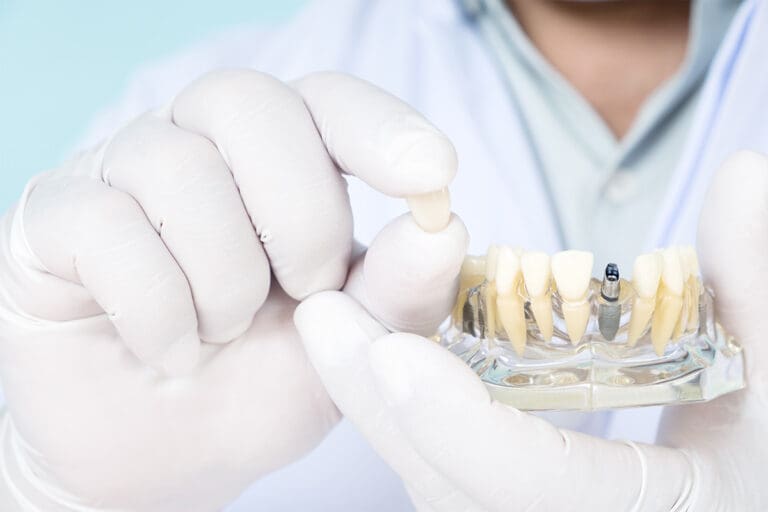Interceptive Orthodontics, or early orthodontic treatment, is an absolute game-changer. It’s a proactive approach that is all about early detection, prevention, and treatment of potential orthodontic problems before they have a chance to develop fully. The goal is simple—to reduce or eliminate the need for more extensive orthodontic treatment later in life. Imagine saving time and money and sparing your child the discomfort and self-consciousness that can often come with traditional braces.
This guide will illuminate the vast benefits of Interceptive Orthodontics, and provide you with a wealth of information on what to anticipate, the range of treatment options available, how to identify early warning signs, and much more. You’ll be able to approach your child’s oral health with newfound confidence and knowledge, empowering you to make the best decisions for their long-term well-being.
So brace yourself (pun intended) for a deep dive into the exciting world of Interceptive Orthodontics. This could be the key to giving your child a brighter, healthier smile, with fewer orthodontic complications in the future. Let’s explore the potential of early orthodontic treatment together and unlock the secret to a lifetime of picture-perfect smiles!
Benefits of Interceptive Orthodontics
1. Early Identification and Correction of Orthodontic Issues
Interceptive orthodontics allows dental professionals to identify and address potential orthodontic problems before they become more severe, reducing the likelihood of complications and lengthy treatment plans in the future.
2. Improved Facial Development and Aesthetics
By guiding the growth of the jaw and facial structure during the critical developmental years, interceptive orthodontics can help children achieve a more proportional and symmetrical facial appearance, improving their overall aesthetics and self-confidence.
3. Reduced Risk of Dental Trauma
Correcting alignment issues and eliminating overcrowding in the early stages can reduce the risk of dental trauma due to accidents, such as chipped or broken teeth, which are more likely to occur in children with protruding teeth or misaligned bites.
4. Better Long-Term Oral Health
Interceptive orthodontic treatment helps facilitate better oral hygiene and maintenance by improving tooth alignment, and reducing the risk of tooth decay and gum disease throughout your child’s life.
The Ideal Age for Interceptive Orthodontics
The American Association of Orthodontists recommends that children have their first orthodontic consultation around the age of 7. At this age, the first permanent molars have typically erupted, allowing the dentist to evaluate the child’s bite and identify any potential orthodontic concerns.
While not every child will need interceptive orthodontic treatment, early evaluation is essential for determining if and when intervention may be required. By age 7, a dental professional can identify potential issues and develop an appropriate, personalized treatment plan for your child.
Common Orthodontic Concerns Addressed by Interceptive Orthodontics
Interceptive orthodontics can address a wide range of dental and orthodontic issues, some of which include:
1. Crossbites
A crossbite occurs when the upper and lower teeth do not align correctly, causing potential damage to the teeth and supporting structures. Interceptive orthodontics can correct crossbites, ensuring a healthier smile for your child’s future.
2. Overcrowding
Overcrowded teeth can lead to complications such as misalignment, difficulty in maintaining proper oral hygiene, and an increased risk of decay. Early intervention through interceptive orthodontics can help create more space for the permanent teeth to erupt, minimizing the need for tooth extractions or other invasive procedures later on.
3. Overbites and Underbites
An overbite occurs when the upper teeth protrude too far forward over the lower teeth, while an underbite develops when the lower teeth extend beyond the upper teeth. Both issues can cause aesthetic concerns and functional problems, such as improper eating and speech difficulties. Interceptive orthodontics can help correct these bite issues and improve the overall function of your child’s teeth and jaws.
4. Jaw-Related Problems
Interceptive orthodontics can help guide the growth and development of the jaw, ensuring proper alignment and function. This can help to avoid issues related to temporomandibular joint disorders and other jaw problems as the child grows.
The Role of Pediatric Dentists in Interceptive Orthodontic Treatment
Pediatric dentists play a crucial role in identifying potential orthodontic issues and coordinating early treatment plans. During routine dental check-ups, pediatric dentists carefully assess your child’s oral development, looking for signs of potential orthodontic concerns. If a problem is identified, the pediatric dentist may refer your child to an orthodontic specialist for further evaluation and treatment considerations.
In cases where interceptive orthodontics is deemed necessary, the pediatric dentist will work closely with the orthodontist to develop a comprehensive and personalized treatment plan for your child. This collaborative approach ensures that your child receives the best possible care, setting the stage for a lifetime of excellent oral health and a confident smile.
A Parent’s Guide to Interceptive Orthodontics: Helping Your Kids Smile Brighter with Waban Dental Group
The Interceptive Orthodontics service provided by Waban Dental Group stands as a revolutionary and transformational approach to early orthodontic treatment for children. As a leader in the field, Waban Dental Group has combined science, technology, and artistry to ensure that every child receives exceptional care tailored to their unique needs.
The dentists in Newton at Waban Dental Group excel in providing strategic early intervention that optimizes the development of children’s teeth and jaws, fostering a strong foundation for their oral health.
After all, we understand the importance of building positive associations with dental care from an early age, and we go above and beyond to ensure that your child’s experiences at our practice are comfortable and enjoyable.







